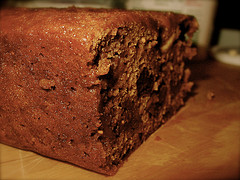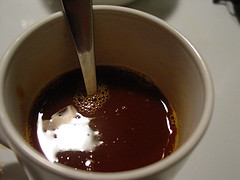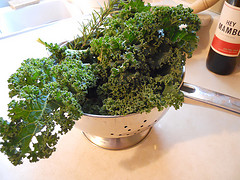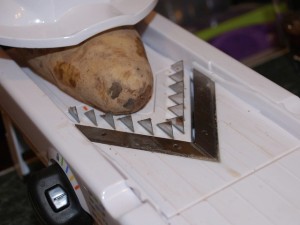This is a work-in-progress at the early stages. Tips, suggestions, replication challenges welcome!
Malt loaf is something you probably either love or hate. If you’ve spent much time in the UK, you’ve probably encountered it and had the chance to become addicted or horrified. It’s a sticky, chewy, dark dense bread with dried fruit (usually raisins) in it, served sliced with butter or margarine.
I’m attempting to replicate the Soreen Maltloaf. We get it from the UK when we can, and fill the freezer, but there’s no US distributor that sells to stores, so our supply is limited. And it’s a sad day when we realize we’ve eaten the last one from the freezer.
My first try with this bread was a quickbread recipe, despite the Soreen version being a yeast bread. Ok. Lived, learned. Here are some notes from that first attempt.
 1. Select fruit. I went with dried mission figs and dried cherries, about 150g, to make something similar to Soreen’s Lincolnshire Plum (which has no plums in it).
1. Select fruit. I went with dried mission figs and dried cherries, about 150g, to make something similar to Soreen’s Lincolnshire Plum (which has no plums in it).
2. Make a pot of tea!! No, seriously! I made about 75mL of very strong Rington’s black tea. This is to mix with the malt syrup to make it easier to mix, but I soaked the dried fruit in it first.
3. Mix tea into 200g malt extract, and mix with 175g self-rising flour (1 c. self-rising = 1 c. AP + 1 1/4 t. baking powder + 1/8 t. salt), 1 egg, 1/2 t. mixed spice (I used a pumpkin pie spice blend), and the fruit.
4. Spray a 2# loaf tin with oil, pour batter in, and bake 75 – 90 minutes. Let stand at least 10 minutes before slicing (if you can stand it).
Outcome: It was tasty, but it wasn’t maltloaf. Next time, I think I’ll try this recipe, which uses a combination of whole wheat and white flour, both malt extract and black treacle, and YEAST. And comes from the UK Flour Advisory Bureau, apparently.









